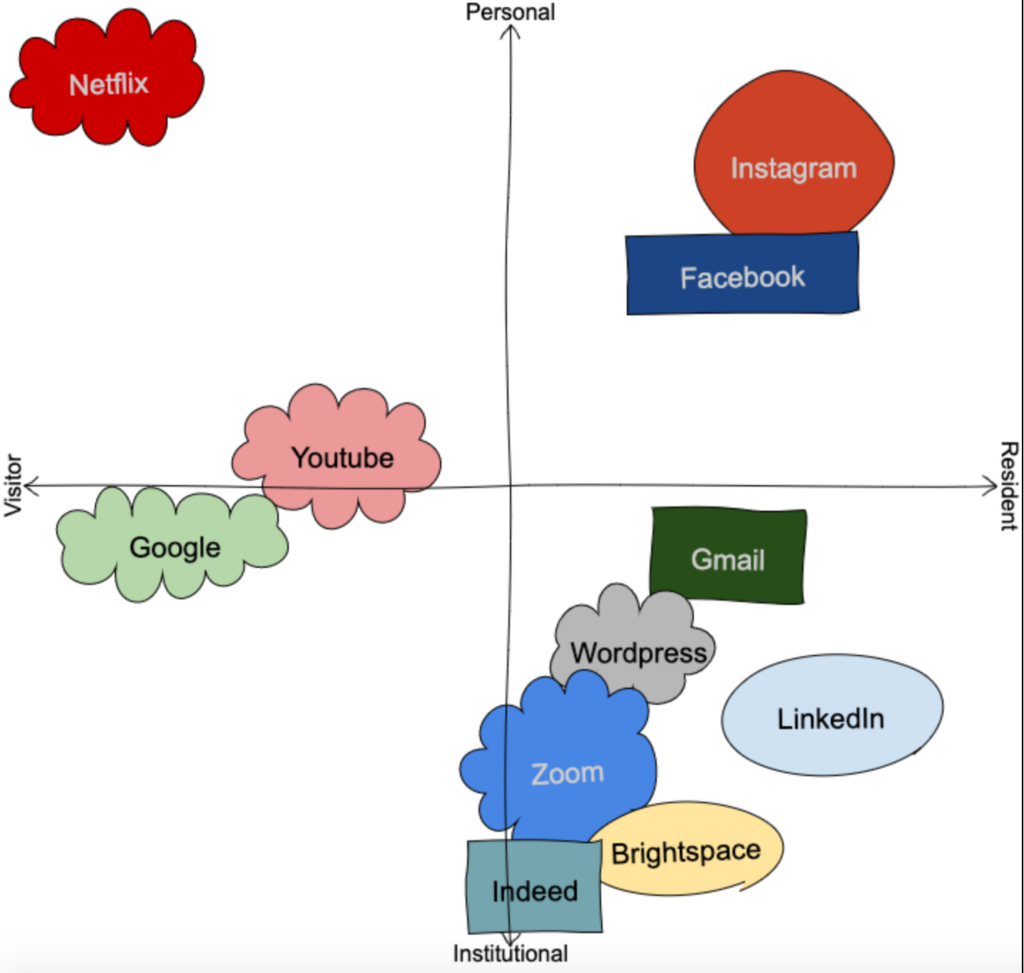How does social media engage communications?
Social media engages communications due to its ability to connect thoughts, ideas, and people in nearly an instant. Whether an individual wants to connect with a specific individual (i.e. a plumber) or a general population (i.e. a book club on facebook), social media gives individuals the ability to do so. To be more specific, each individual with some form of social media will have a digital identity and, as we’ve learned in this class, you can tell a lot about a person based on their digital identity. When an individual wishes to connect with another, social media fosters this communication by providing the most optimal results based on both their digital identity and those it wishes to connect to, as well as their needs. For example, if I search for an accountant on LinkedIn, it will take into account the fact that I’m looking for an accountant and actually provide me with a list of names but may also, in addition, do it’s best at finding the most desirable outcome by providing me with a list of those who are in my geographical area and those who my friends have already connected with – increasing the chances of engaging in communication.
How does social media challenge communications? Is it inclusive?
I’ve found that social media can challenge communications due to two main factors. The first one being restrictions of certain speech/views. This is a tough subject to discuss as it’s a difficult problem to solve, but nonetheless, should be as it relates to challenging communications. Given that the whole goal of communication is to exchange information, thoughts, and ideas, when one side of a discourse is censored then it no longer becomes an exchange; thus, challenging communication. This also impacts inclusivity as, depending on an individuals’ speech/views, they may or may not be allowed to participate on certain social media platforms and/or join certain groups on social media.
The second factor is a lack of accountability. Although there is the presence of digital identities and PLN’s on social media, there is also a universal belief among social media users that as long as they don’t input any real information in their account then they’ll remain anonymous. This can then lead to the users acting in a different manner than they would in a face-to-face context – most often in a more irresponsible, inappropriate, and even hateful way. This challenges communication as it threatens credibility and genuine interactions.
Does your PLN amplify the views of others?
I believe that my PLN does amplify the views of others because my PLN is composed of other friends and/or individuals that I have at least one common factor with – whether it’s a content creator that focuses on a activity that I like, athlete that plays in a sport I like, or an individual with who I have a mutual friend with. Because of this, when I am exposed to individuals that I have nothing in common with, their views get amplified as they may seem ‘alien’ or simply different to what I am used to being exposed to.
How to better use social media to build PLN – Influencers & Commentators
When it comes to influencers and commentators wanting to build their PLN, social media is the best tool to do so as it is what will generate the most interactions – which ideally, would lead to numerous connections. In order to generate the most interactions on social media, they should decide who it is they want to connect with and then find out what content those individuals want to see. For example, if you’re an influencer wanting to get into the gaming industry, your best bet would be to produce and release gaming content through social media. As long as it’s good content that pleases your audience and is consistently released, your target population would continuously grow.



Recent Comments